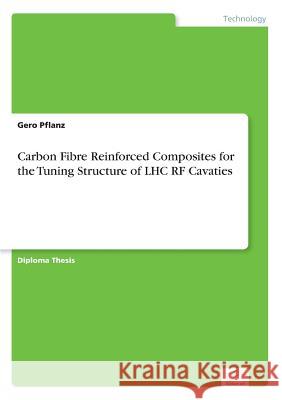Carbon Fibre Reinforced Composites for the Tuning Structure of LHC RF Cavaties » książka
Carbon Fibre Reinforced Composites for the Tuning Structure of LHC RF Cavaties
ISBN-13: 9783838600970 / Angielski / Miękka / 1997 / 130 str.
Carbon Fibre Reinforced Composites for the Tuning Structure of LHC RF Cavaties
ISBN-13: 9783838600970 / Angielski / Miękka / 1997 / 130 str.
(netto: 410,82 VAT: 5%)
Najniższa cena z 30 dni: 429,00
ok. 16-18 dni roboczych
Bez gwarancji dostawy przed świętami
Darmowa dostawa!
Inhaltsangabe: Abstract: The suitability of different materials for the tuning structure of the LHC rf cavities is evaluated. The structure spanning the temperature interval from room to cryogenic is subjected to mechanical loading, and radiation. A filament wound tube reinforced with high-strength carbon fibres is considered to be most appropriate. Design calculations are performed using laminate theory. The safety margin for a cylindric filament wound tube under the given mechanical and thermal loading conditions is calculated for different winding angles. The calculations indicate that the thermal load is causing shear and transverse stresses which are more critical than the stresses due to the mechanical load. A fatigue test is performed with a prototype tube under thermal and mechanical working conditions as they are estimated for LHC. Before and after the fatigue test, non-destructive testing methods (ultrasonic examination, microscopy, and geometry measurements) are employed to evaluate the material condition before and after the fatigue test. All three non-destructive tests indicate that the prototype tube withstood the fatigue test damage free. No advice on fibre breakage, delaminations, or matrix micro-cracking has been found. Inhaltsverzeichnis: Table of Contents: 1.Introduction1 2.Background3 2.1CERN3 2.2CERN's Future Project LHC4 2.3RF Cavities5 2.4Tuning of Cavities7 3.Material and Geometry11 3.1Mechanical Load, Life Expectancy12 3.2Thermal Load13 3.3Radiation Resistance13 3.4Choice of Material14 3.5Choice of Structure17 4.Design Calculations21 4.1Mechanics of Fibre-Reinforced Composites21 4.2Calculation of Stresses and Strains23 4.2.1Temperature Distribution23 4.2.2Stresses and Strains26 4.3Failure Analysis34 5.Testing Methods37 5.1Destructive.37 5.1.1Tensile Properties37 5.1.2In-Plane Shear Properties38 5.2Non-Destructive Testing38 5.2.1Ultrasonic Testing39 5.2.2Radiography43 5.2.3Acoustic-Emission44 5.2.4Acousto-











